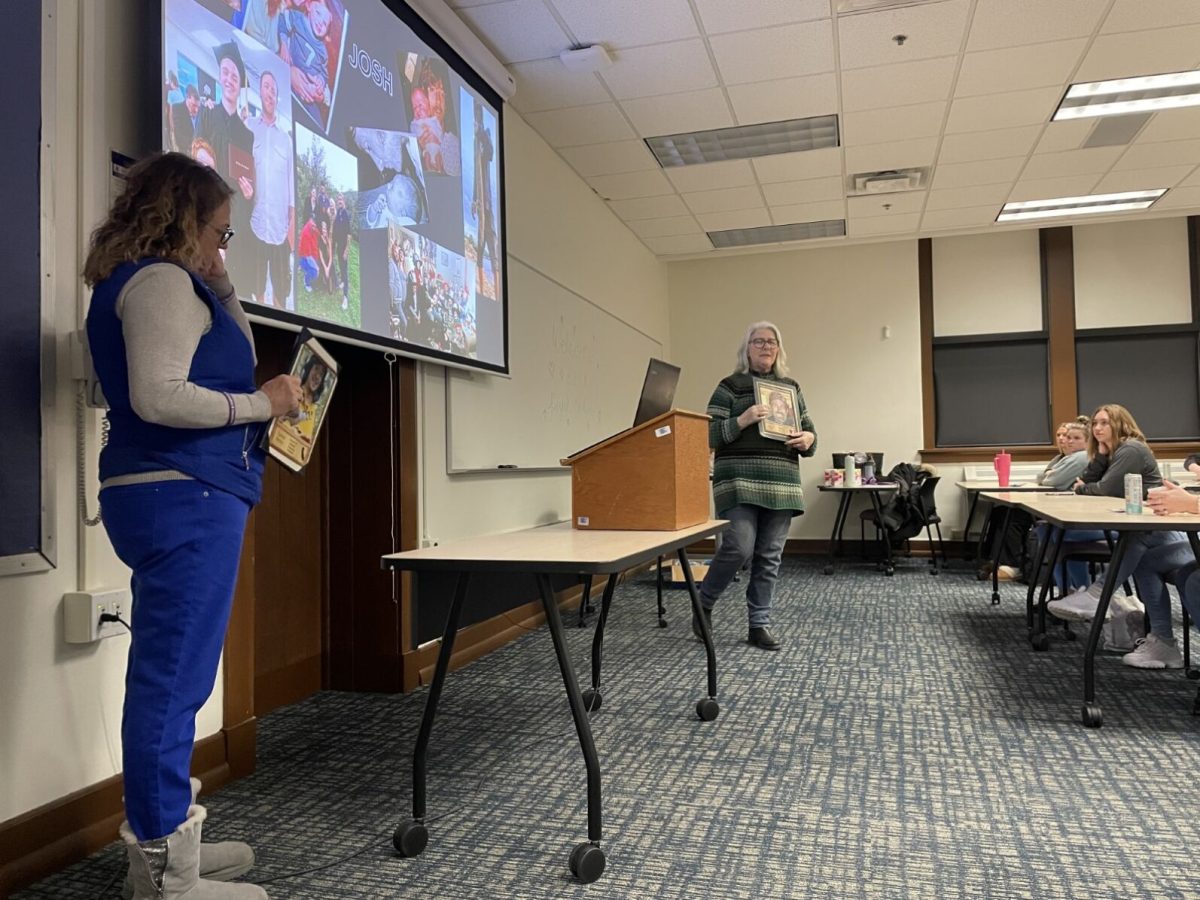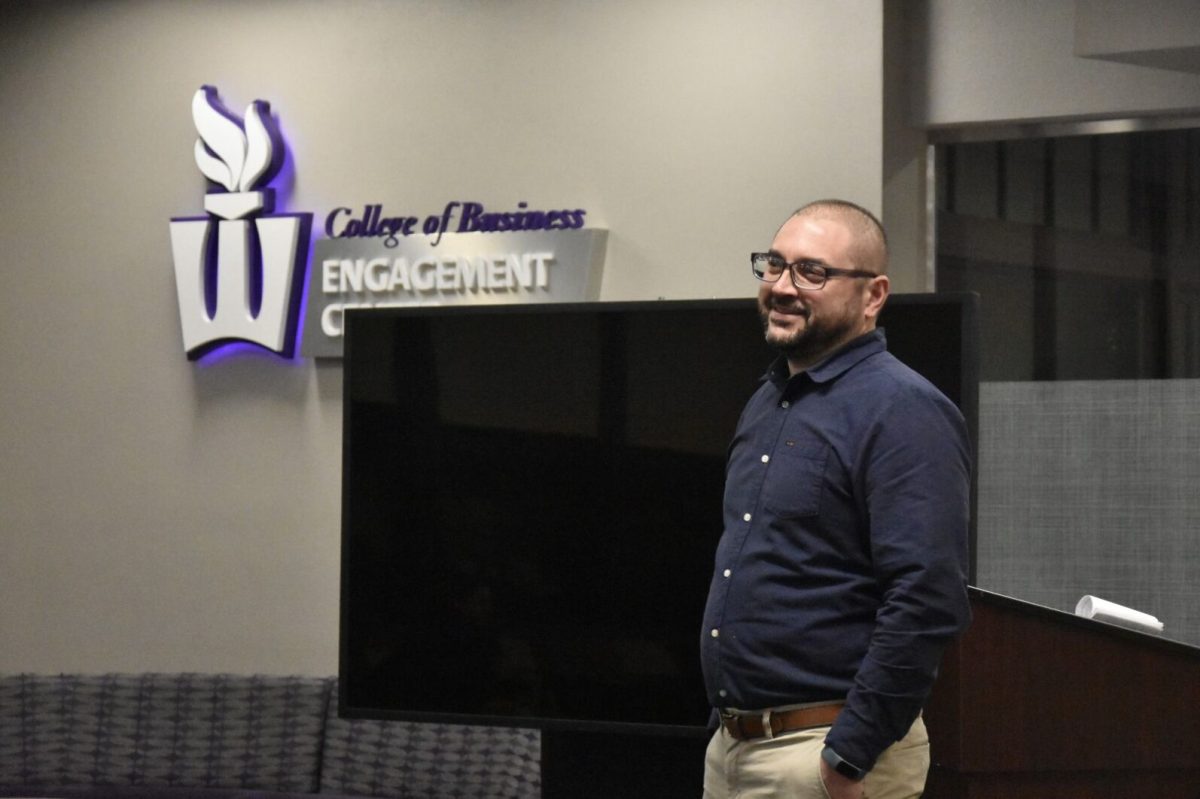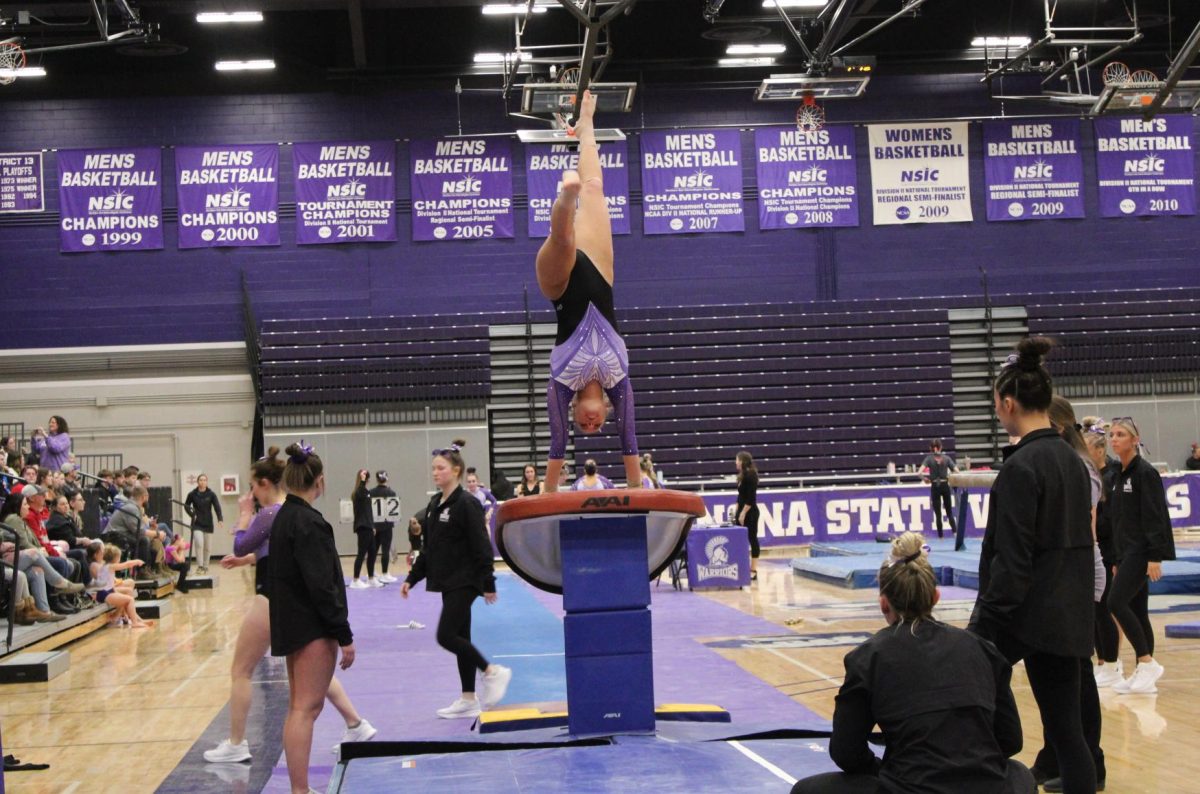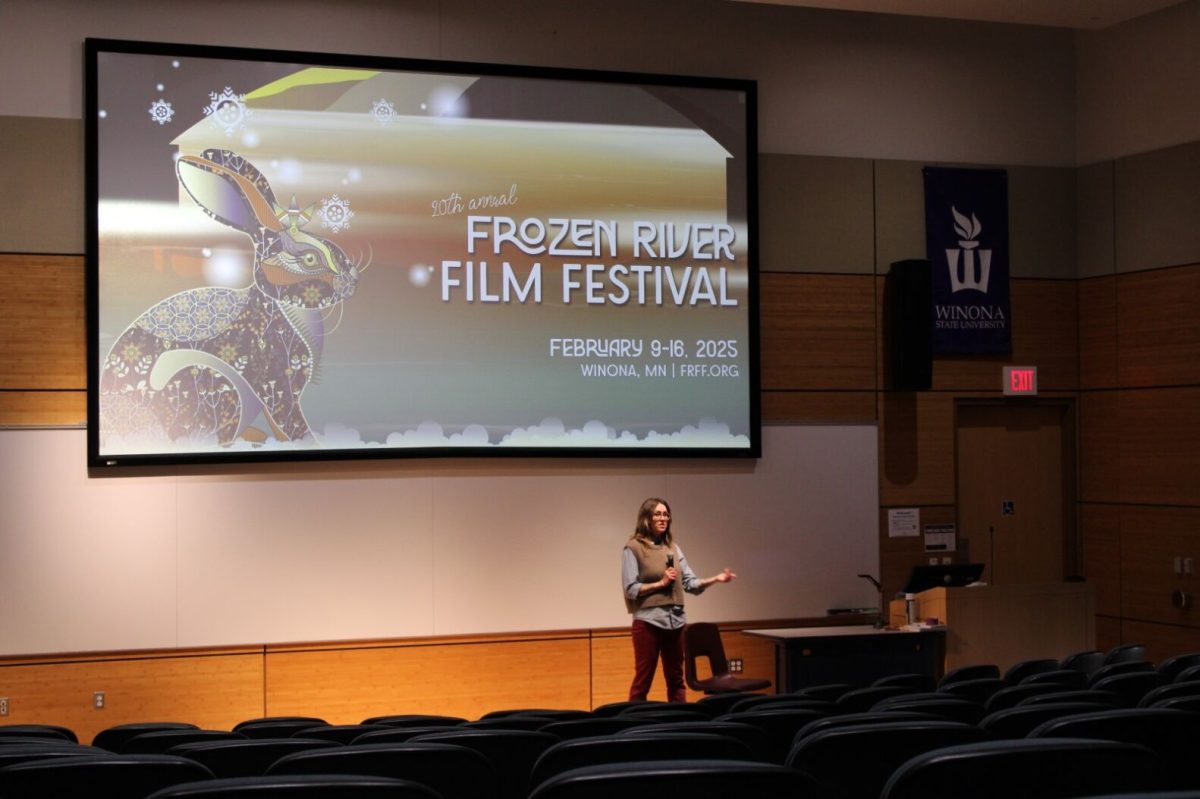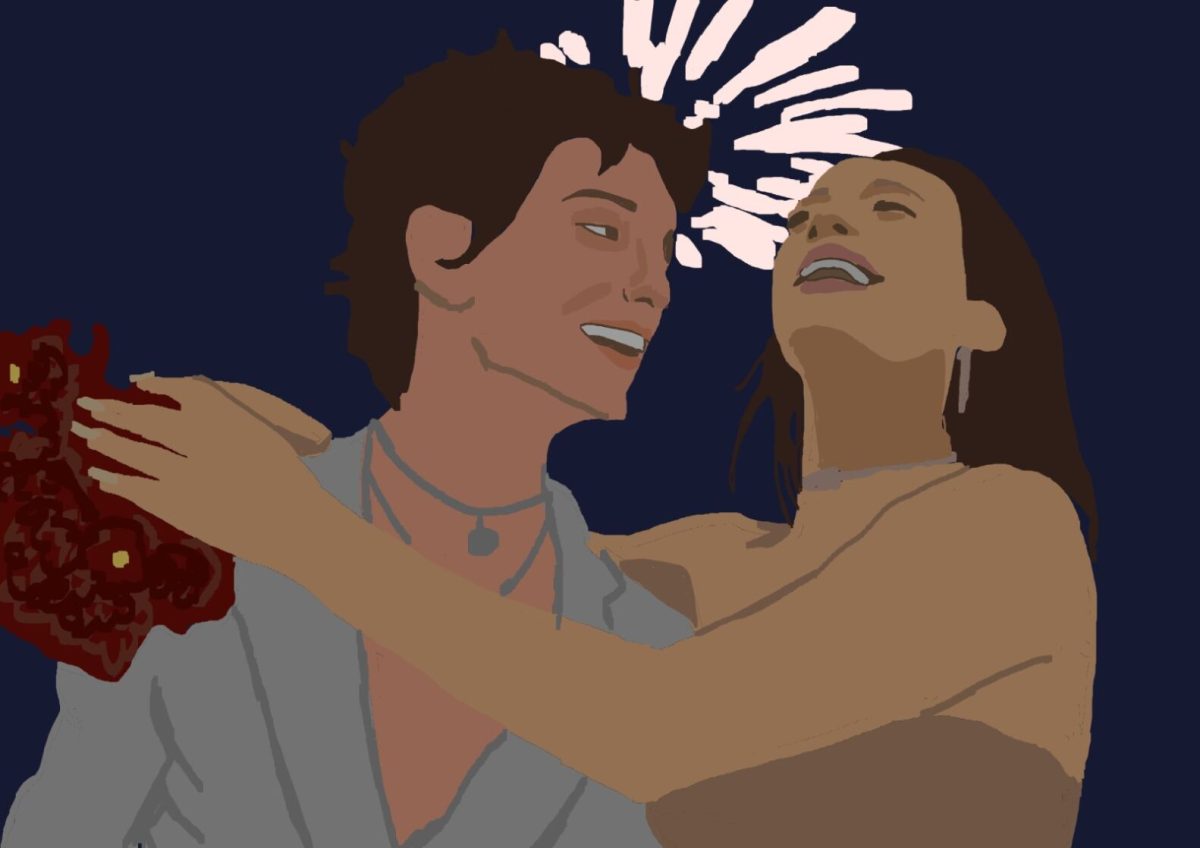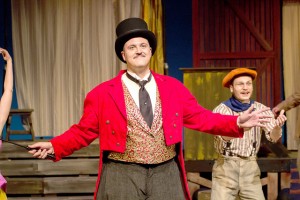
Gina Scott/Winonan
As the lights slowly faded, only the sounds of the audience’s sniffling broke through the somber silence in the Vivian Fusillo Theatre. Winona State University’s first main stage production of the year ended Saturday, Oct. 17 and “Elephant’s Graveyard” presented the audience with an emotionally compelling show, leaving many playgoers in tears.
Following the true story of Mary the elephant’s hanging in the town of Erwin, Tenn. in 1916, the play explored the relationships between humans and animals, and exploited the treatment of circus animals.
The play depicts Sparks Circus and the story of their beloved elephant, Mary. Through a series of mistakes, one of the circus people, Red, was crushed and killed by Mary in a parade. The gruesome public death led the witnesses (the townspeople in Erwin) to demand Mary be killed for her crimes. They decided to hang her, chaining her to the railroad tracks and using a crane to raise the chain noose.
But through their anger they became distracted and careless, accidentally keeping Mary chained to the railroad at the same time they begin to lift the crane, pulling her apart and torturing her. Mary’s trainer rushed to unchain her, but the grisly and horrendous event traumatized both those who loved Mary and those who begged for her death. The play allowed the characters to describe their perception of the events through a storytelling narrative.
In 1916, circuses were the spectacle that everyone wanted to see. The contrast between the townspeople and the circus shed light onto that relationship. While the town was dull and muddy, the circus people immediately caught the audience’s attention.
Bekah Bailey, the stage manager of the production, commented on the contrast between costuming.
“In comparison to the townspeople, the circus peoples’ costumes are loud and bright and fun,” Bailey said.
The circus performers included a ballet girl, a strong man and a clown. All of these unique characters brought out their quirks through their monologues, but they all expressed their love and fascination with Mary. Throughout their monologues, the people of the town shared that same love for Mary as well.
Transitions were crucial in this play, which ran a little over an hour. There was no intermission; all set changes were done on stage, under the lights and by the actors themselves.
“It all happens quickly under other actors’ lines,” Bailey said.
When the circus arrived in Erwin, the dull and dirty set was transformed into a colorful circus with striped curtains that represented the tent, hand-painted posters and American flag banners.
The drummer, Nick Elstad, was listed with the circus people on the playbill. He provided the sound cues for the actors and created the excitement and the tension from the events and actions of the characters.
“I think [the music and sound cues] ties in the audience more and brings a completely different atmosphere to the show,” Bailey said.
The guitarist, drummer and balladeer also aided transitions. The balladeer, played by Amy Kennedy, and the guitarist, Jackson C. Ramsland, were associated with the townspeople. Introducing the audience to the show, Kennedy sang the soulful tune, “You Got to Lift It,” written by George Brant, the playwright himself.
Throughout the play, Kennedy and Ramsland performed songs that reflected the moods brought on by the events on stage, as well as songs that represented the emotions the townspeople felt. “Standing On the Promises,” by Russell K. Karter, was performed after Mary had killed Red, reflecting the confusion and sadness the townspeople had experienced.
Before the hanging of Mary, “You Got to Lift It” was performed again, representing the determination the townspeople had to kill “Murderous Mary.” After Mary had been hung, the sorrowful song, “Freight Train” by Elizabeth Cotton brought out the sadness that the characters showed once the deed had been done. The title of the song also coincided with the fact that the railroad provided the crane that hung Mary.
The characters’ actions played a key role in the transitions as well. Their acting did not stop as they changed the set. As the circus came into Erwin, they excitedly set everything up, reflecting on how excited they were to see the elephants and performers.
However, after Red was killed, their moods had changed and the audience could feel the sadness, supported by Kennedy’s singing and the actors putting away the fun circus props.
Directed by Jim Williams and Heather Williams-Williams, the actors adjusted to the stylized script that is entirely comprised of storytelling instead of acting in real time.
“The whole show is us narrating something that already happened,” Emma VanVactor-Lee, who played the role of the clown, said. “We’re never interacting with each other, we’re just talking to the audience.”
One audience member, who wished to remain anonymous, felt that the scene describing Red’s death was the most poignant moment of the show.
“My favorite scene was the Hungry Townsperson’s monologue describing Mary killing Red,” he said.
Raeshawn Payton played the Hungry Townsperson. As Payton spoke, the lights from the stage slowly faded to a single spotlight on her.
“The writing and her delivery gave me goose bumps,” the audience member said. “It really pulled you in, and I leaned further and further in my chair as the lights dimmed.”
At Payton’s final line of the monologue, “Elephant rider turns red,” Marshall, played by Thomas Sonneman, fired his gun, provoking screams from the audience. The tension brought on by Payton immediately became fear; the same fear that was being portrayed by the actors.
Addison Sim, who played the trainer, reflected on the motives of his character.
“He feels closer to the elephants than he feels with most people,” he says.
Sim compared the trainer to a mother of a person who is labeled a criminal of a heinous crime, bringing out the authentic love he had for Mary and the rest of the elephants.
“It’s not only a source of pride, it’s also a source of that mothering nature,” Sim says.
These raw emotions were depicted in a way that made the audience feel the pain the trainer was feeling. As the characters described the hanging of Mary, soft crying was heard throughout the theatre.
Even the clown contributed to the somber atmosphere.
“All of a sudden I can’t make people laugh. I can’t make it funny,” VanVactor-Lee said.
VanVactor-Lee projected this sadness onto the audience by changing from the character that tried his best to make people laugh, to the character that could not get over the hurt he felt after what had happened.
“Her character shifted dramatically,” the audience member said. “It was saddening to watch the image of happiness and joy clowns are known for to be replaced with grief.”
“Elephant’s Graveyard” was a short play containing a lot of emotional impact. Not only did it expose the mistreatment of circus animals, the play also pointed out the division of people.
Despite the strict narration, the cast of “Elephant’s Graveyard” gave the audience a play that resonated and lingered in their minds. The audience could get lost in the storytelling to the point where they could feel each emotion and react to each event as if it were happening in real time. The portrayal of “Elephant’s Graveyard” kept the tragic story of Mary the elephant alive.


